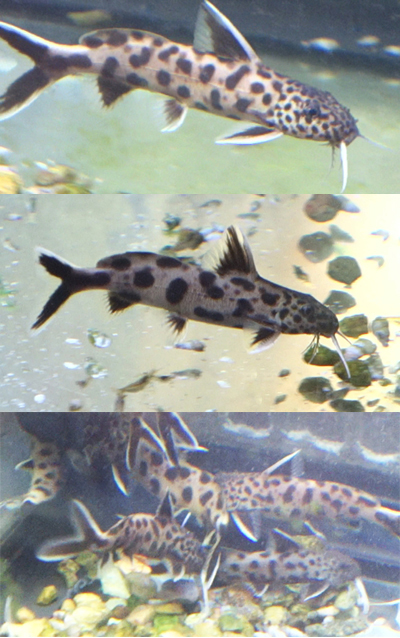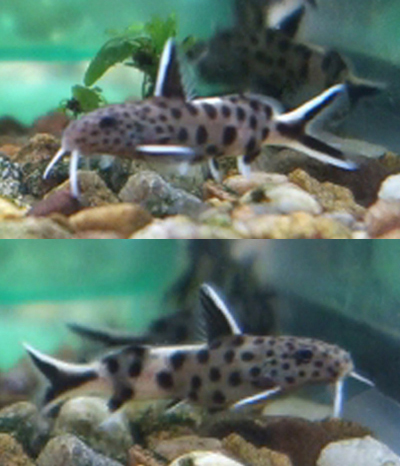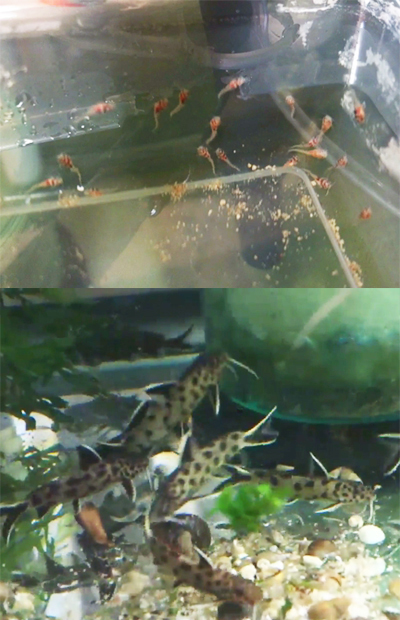|
|
||
|
|
Synodontis lucipinnis, Lake Tanganyika
|
|
|
|
||
|
Common Name- Dwarf Petricola Water
Conditions- Temp. 74- 80, Aeration |
|


|
|
|
|

|
|
The Top pic is a young, just about
ready to breed male.
The 2nd pic is a young female, not yet carrying
eggs.
In the 3rd, pic, a group is quite striking. The
markings
on each fish is different.
The Top fish
at Right is about 1.5 inches and recently
into its full adult coloration, and ready for sale.
In the lower pic at Right,
this fish still shows remains of
its juvenile coloration. The vertical body white stripe
will
disappear shortly and is totally normal.
|
|
|
|
|
|
|
An active, friendly, long lived and
attractive fish, these are often unavailable in pet stores. They
are generally bred For more information on this fish and its care requirements, click HERE.
As well, the method I use here to breed this fish is carefully
described and explained in 2 videos that can be
Back to Previous Species To Next Species
|
|
|
_______________________
Instead of using a Paypal
link,
|
|
|
|
|
|
Considered difficult to
breed with This line of lucipinnis has been out of the After 6 years of experimenting, breeding The method, setup and all you need |
|
|
Though the lucipinnis has now been
here for 7-8 years, I am only now showing results of efforts to
|
|
|
|
|
